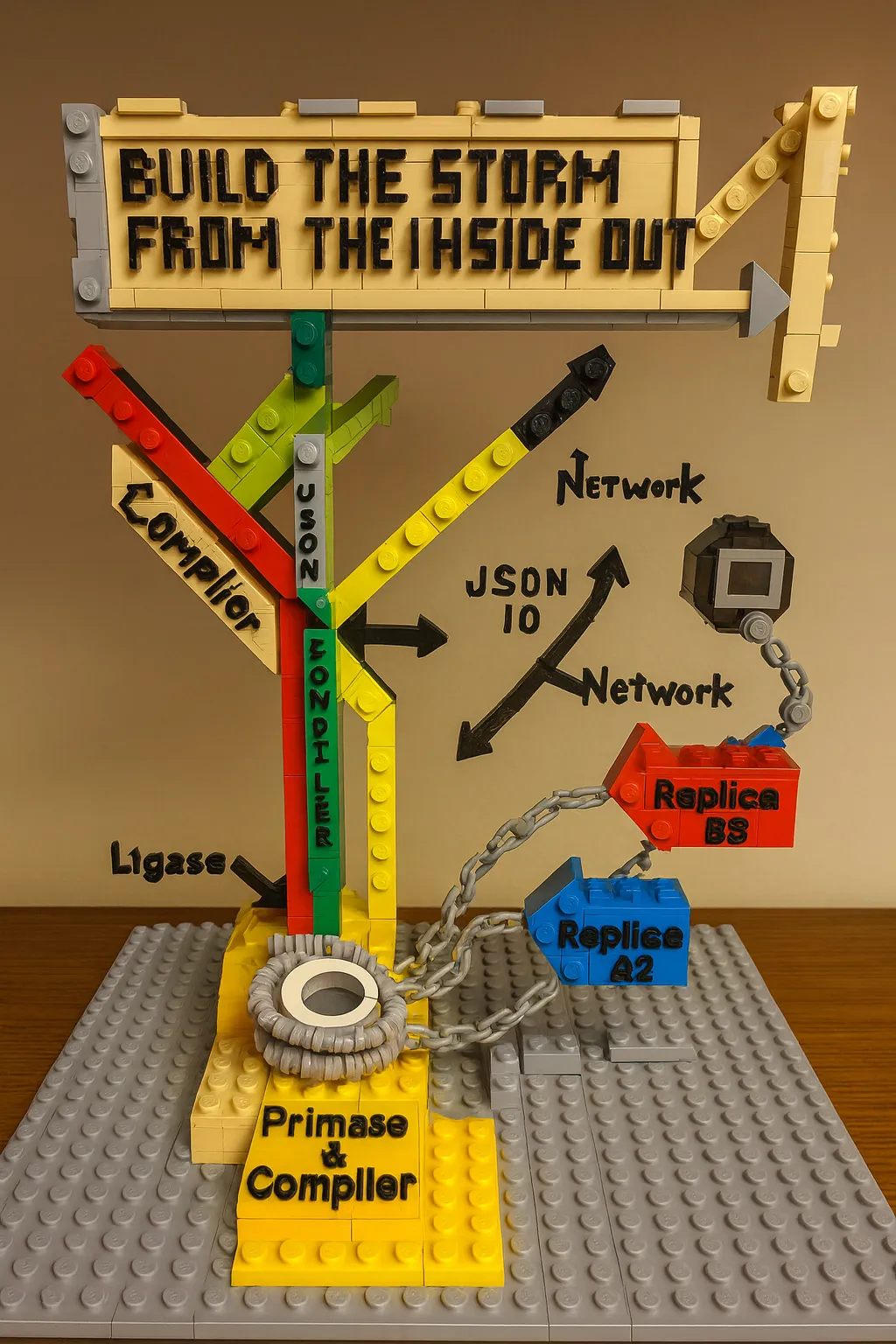Digital Neuroplasticity: Growing AI With Primase and Glia
For years, artificial intelligence has been engineered as if it were a product: you design an architecture, train a model, and deploy a static artifact. But biology doesn’t build intelligence this way. Brains don’t get “deployed.” They grow, and they keep adapting throughout their lifespan.
The key to making AI systems more resilient and adaptive lies in borrowing two overlooked biological processes: primase initiation in DNA replication, and glial maintenance in neural networks. Together, they point toward a practical strategy we can implement today — a cycle of digital neuroplasticity, where software grows, prunes, and rewires itself in real time.
Primase: The Spark of Growth
In DNA replication, primase is the enzyme that creates the starting point. DNA polymerase cannot start from scratch; it needs primase to lay down a short RNA primer first. Once that foothold exists, the polymerase can extend and replicate the strand.
Translated into computation, primase is an initiator service:
- It doesn’t build entire programs, it just generates small candidate fragments.
- Think JSON snippets, partial AST nodes, or micro-agents that can be extended later.
- These fragments act like “primers” — they give the system a place to start growing.
Without primase, DNA would never replicate. Without an initiator, a digital system cannot continuously grow.
Polymerase: Extending the Primer
Once the primer is in place, biology passes control to polymerase, which extends it into a full DNA strand.
In a digital system, this role belongs to compilers or transformation services:
- They consume the short fragments produced by the initiator.
- They attempt to extend them into functional routines or microservices.
- Some will succeed; many will fail. Successes are passed forward, failures discarded.
This separation of roles — tiny initiators versus heavy extenders — keeps the system efficient. Growth doesn’t start from zero; it starts from a foothold.
Glial Cells: Maintenance and Plasticity
Neurons get all the attention, but glial cells do the real work of keeping the brain adaptive. They clean, prune, and support neural networks:
- Astrocytes allocate resources and manage nutrient flow.
- Microglia prune unused or unstable synapses.
- Oligodendrocytes insulate active pathways for efficiency.
Digitally, this maps to glial managers in a runtime system:
- Pruning agents: terminate failing or unused processes.
- Reinforcement agents: allocate more CPU, memory, or bandwidth to pathways that prove useful.
- Optimization agents: cache or streamline frequently accessed links.
Glia give the system its plasticity — the ability to rewire dynamically in response to activity.
The Digital Neuroplasticity Cycle
When you combine primase-like initiators with glial-like managers, you get a feedback loop that looks remarkably like a living brain:
- Initiation (Primase)
- Generate new fragments or candidate processes.
- Extension (Polymerase)
- Build fragments into usable routines.
- Cleanup (Glial Pruning)
- Remove unstable or unused processes.
- Reinforcement (Glial Strengthening)
- Allocate resources to high-performing pathways.
- Repeat
- The system continuously evolves — growing, pruning, and adapting.
Why This Matters
Traditional AI models are rigid: once trained, they don’t change shape without retraining. A system built around digital neuroplasticity, however, would:
- Self-heal by pruning failing processes.
- Adapt by generating new pathways when needed.
- Evolve by strengthening what works and discarding what doesn’t.
In other words, it would behave more like a living brain than a static artifact.
Engineering Translation
Here’s what this looks like in developer terms:
- Initiator Service: continuously emits small candidate JSON/AST snippets or micro-agents.
- Extension Service: compiles or transforms candidates into functioning routines.
- Glial Manager: monitors execution, prunes bad processes, scales up good ones.
- Feedback Signals: performance metrics, usage frequency, or swarm metadata drive reinforcement.
This is a system you can build today with microservices, container orchestration, and monitoring frameworks. It doesn’t require exotic technology — just the willingness to let software grow instead of forcing it to remain static.
Closing
Brains don’t stay the same shape. They grow new connections, prune weak ones, and reorganize continuously. By bringing primase initiation and glial maintenance into computation, we gain a roadmap for building AI that doesn’t just run programs — it grows them.
This is digital neuroplasticity: the foundation for AI that adapts, evolves, and survives the way biology does. If you’re a developer thinking about the future of AI, this isn’t metaphor. It’s the first step toward growing intelligence, not building it.
